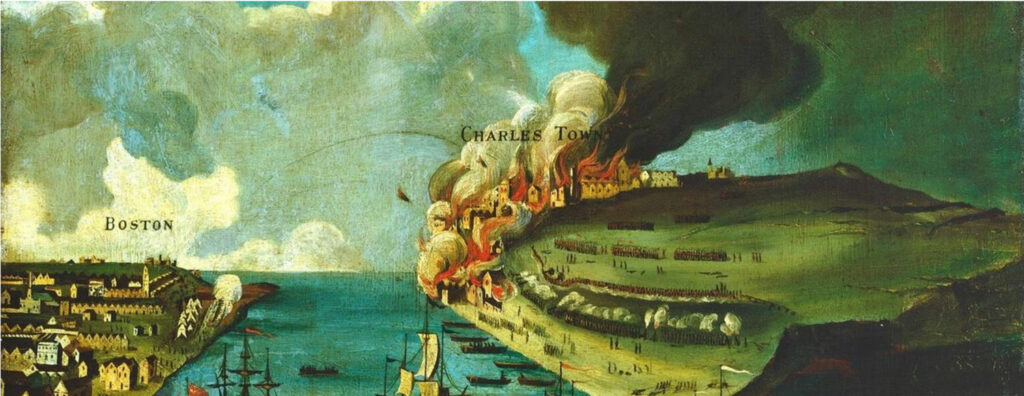Excavations Reveal Boston Neighborhood Burned in Battle of Bunker Hill
- archaeology.org language
- 2025-10-01 01:00 event
- 2 days ago schedule


Domain FALEARN.com for sale! This premium domain is available now at Kadomain.com

A new study (pdf) by Lund University researchers of the weapons found on the wreck of the 15th century Danish royal flagship Gribshunden has cast new light on the development of naval artillery in the Age of Discovery, and how the armed ships were used in battle. Part of 11 cannons and their oak gun … Read the full post →"Gribshunden’s artillery explained"
AARHUS, DENMARK—Researchers have discovered the earliest known traces of blue pigment on a 13,000-year-old stone […] The post Earliest Use of Blue Pigment in Europe Identified appeared first on Archaeology Magazine. News, azurite, blue, Germany, Paleolithic, pigment
EILEAN DONAN, SCOTLAND—The iconic Eilean Donan Castle is one of the most picturesque spots in […] The post Medieval Hair Styling Tool Recovered at Scottish Castle appeared first on Archaeology Magazine. News, castle, Eilean Donan, gravoir, hair styling, medieval, Scotland
NEFUD DESERT, SAUDI ARABIA—Researchers were recently surprised when they encountered more than 60 ancient rock […] The post Animal Rock Art Likely Marked Arabian Desert Water Sources appeared first on Archaeology Magazine. News, animals, camels, desert, Nefud Desert, rock art, Saudi Arabia, water
The poster for John Wayne's The Alamo (1960) celebrates its history with the line, "The Mission That Became a FortressThe Fortress That Became A Shrine," which is a concise and accurate summary of the story of the structure famously known as the Alamo in downtown San Antonio, Texas, USA. The Mission Texas was claimed by Spain in the 16th century and began establishing mission complexes between...
The pre-First World War arms race between Britain and Germany was fuelled by Britain's desire to protect its empire, Germany's desire to build an empire, and a general atmosphere of suspicion amongst the great powers, which led to the formation of two opposing alliance blocs. Dreadnought battleships became a particular point of competition between the Royal Navy and the Imperial German Navy, a race...
Dozens of monumental rock carvings of animals have been discovered around in Saudi Arabia’s Nefud desert. They date to 12,000 years ago, 2,000 years older than the previous earliest evidence of human occupation in the area. The discovery has been published in the journal Nature Communications. Before this discovery, the first human presence in the … Read the full post →"12,000-year-old animal rock carvings found in Saudi Arabian desert"
‘The Indefatigable Asa Briggs’ by Adam Sisman review JamesHoare Wed, 10/01/2025 - 08:00
Elam was a region in the Near East corresponding to the modern-day provinces of Ilam and Khuzestan in southern Iran (though it also included part of modern-day southern Iraq) whose civilization spanned thousands of years from circa 3200 to circa 539 BCE. The name comes from the Akkadian and Sumerian for highlands or high country, while the Elamites referred to their land as Haltami (or Haltamti...
CHARLESTOWN, MASSACHUSETTS—Every American schoolchild learns of the brave stand Revolutionary War Patriots made during the […] The post Excavations Reveal Boston Neighborhood Burned in Battle of Bunker Hill appeared first on Archaeology Magazine. News, Boston, Bunker Hill, Charlestown, fire, Massachusetts, Revolutionary War, tavern
CRANFIELD, ENGLAND—The development of iron metallurgy was one of the most pivotal moments in human […] The post Copper Workers' Experiments Might Have Helped Usher In Iron Age appeared first on Archaeology Magazine. News, copper smelting, Cranfield, Georgia, Iron Age, iron oxide, Kvemo Bolnisi, metallurgy
POMPEII, ITALY—The Villa of the Mysteries on the outskirts of Pompeii contains some of the […] The post "Waiting Room" Found Outside Popular Pompeian Villa appeared first on Archaeology Magazine. News, clients, Italy, master, Pompeii, Villa of the Mysteries, waiting bench
The Moroccan Crises were two international incidents, the first in 1905-6 and the second in 1911, when Imperial Germany, eager to expand its empire, threatened France's presence in Morocco. France's position was supported by Britain and Russia, meaning Germany was obliged to back down twice. Although not a direct contributor to war, the Moroccan Crises certainly caused a strengthening of alliances...
The Race to Write a History of Naples JamesHoare Tue, 09/30/2025 - 08:00
A rare gravoir, a medieval hairstyling tool, has been discovered at Eilean Donan castle at Dornie, in the western Highlands of Scotland. It is one of only three examples ever found in the UK, and the first of them to be found in Scotland. The tool dates to the 13th century and is made of … Read the full post →"Rare 13th c. hair styling tool found at iconic Scottish castle"
BARCELONA, SPAIN—According to a statement released by the University of Barcelona, researchers identified the oldest […] The post New Study Identifies Oldest Hippopotamus Ivory Object in Iberia appeared first on Archaeology Magazine. News, Barcelona, Bobila Madurell, Copper Age, hippopotamus, Iberian Peninsula, ivory, Spain, trade networks
TABUK, SAUDI ARABIA—Saudi Arabian officials announced that archaeologists discovered the oldest known human settlement on […] The post Earliest Human Settlement on the Arabian Peninsula Uncovered appeared first on Archaeology Magazine. News, Arabian Peninsula, human settlement, Masyoun, Pre-Pottery Neolithic, Saudi Arabia, Tabuk
GÖBEKLITEPE, TURKEY—Dating back more than 12,000 years, the Neolithic site of Göbeklitepe is considered the […] The post Life-Size Human Statue Found at Göbeklitepe appeared first on Archaeology Magazine. News, Gobeklitepe, Karahantepe, Neolithic, statue, t-pillar, Turkey
The Day of the Dead, known in Spanish as Da de los Muertos, is a holiday that celebrates life and honors the dead through traditions, food, decorations, and activities intended to sustain the connections between the living and the dead. The Day of the Dead originated in Mexico and is celebrated around the world, beginning on the last days of October and concluding in early November, contrary to...